This build has been archived by the author. They are no longer supporting nor updating this build and it may have become outdated. As such, voting and commenting have been disabled and it no longer appears in regular search results.
We recommend you take a look at this author's other builds.
This guide has not yet been updated for the current season. Please keep this in mind while reading. You can see the most recently updated guides on the browse guides page
 Thank You!
Thank You!
Your votes and comments encourage our guide authors to continue
creating helpful guides for the League of Legends community.
Recommended Items
Runes: Corrupting pot setup


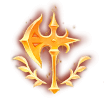
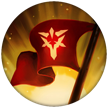

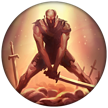


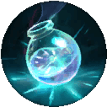



+9 Adaptive (5.4 AD or 9 AP)
+9 Adaptive (5.4 AD or 9 AP)
+10% Tenacity/Slow Resist
Spells:


Flash

Ignite
Items
Threats & Synergies
 Threats
Threats
 Synergies
Synergies
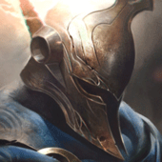 Show All
Show All
 Extreme Threats
Extreme Threats

 Ideal Synergies
Ideal Synergies

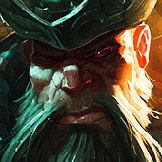
Gangplank
Give up CS as needed so he doesn't murder you with free grasp Qs. A gank will be greatly appreciated to breathe a bit but won't magically make you strong enough to 1v1 him, his kit is too good against yours

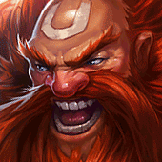
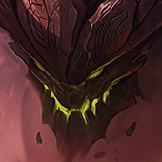
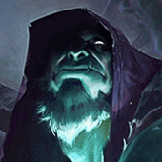
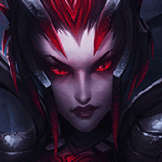
Elise
You stun, then she cannot miss her stun, boom dead enemy, excellent diver too with her aggro reset

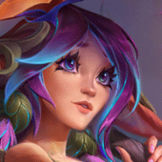
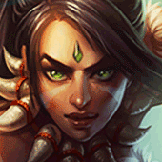
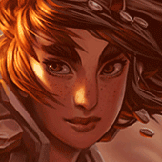
 Synergies
Synergies

Elise
You stun, then she cannot miss her stun, boom dead enemy, excellent diver too with her aggro reset




Champion Build Guide
I am a EUW platinum toplaner who plays almost exclusively
This is a guide on my style of playing
I will detail all my reasonings and give multiple build options. This guide also includes some tips about
PROS
- Strong laning phase
- High snowballing potential
- Oppressive when ahead
- Reliable single-target stun for the team
- Incredible roaming
- Easy to pick up
CONS
- Mediocre scaling
- No good escape once committed
- Uncomfortable in long duels
- Underwhelming in teamfights
- Weak when behind
- Team-reliant kit
However, he tends to struggle as the game goes on and enemies get tankier. He is mostly relegated to a team utility role in the late game unless far ahead.
He is mechanically simple, but requires good decision making to make correct use of his abilities, which will only come with practice.
REASONING BEHIND MURAMANA ON PANTHEON

|
|
This second passive adds a lot of damage to everything

|
|
There are two main weaknesses in
COMPARISON WITH A STANDARD BUILD
If we look at the PROS and CONS from before, the differences between this
High snowballing potential-> Mediocre snowballing potentialOppressive when ahead-> Oppressive when ahead... only once Muramana is complete
Muramana is completeMediocre scaling-> Amazing scalingUncomfortable in long duels-> Strong in long duels
Until your
This breaking point should happen around 20:00 in an average game. If you snowballed hard and bought
MANAMUNE FIRST OR SECOND?
So you have two options.
- Option 1: build
 Manamune first, and then build your mythic.
Manamune first, and then build your mythic. - Option 2: sit on a
 Tear of the Goddess, build your mythic first, and then complete
Tear of the Goddess, build your mythic first, and then complete  Manamune.
Manamune.
Both should result in similar
Even an untransformed
Perhaps more importantly, it only costs 2900g, whereas a mythic +
- For 2900-3000g. With option 1, you would have
 Manamune and a lot of AD as a result. With option 2, you would have something like
Manamune and a lot of AD as a result. With option 2, you would have something like  Tear of the Goddess +
Tear of the Goddess +  Sheen +
Sheen +  Phage +
Phage +  Kindlegem, which only gives 15AD (and a
Kindlegem, which only gives 15AD (and a  Sheen effect), although it at least gives some survivability.
Sheen effect), although it at least gives some survivability. - For 3700g. With option 1, you would now have something like
 Manamune +
Manamune +  Kindlegem. With option 2, you would have
Kindlegem. With option 2, you would have  Tear of the Goddess +
Tear of the Goddess +  Divine Sunderer. Option 1 still gives more AD, but option 2 is overall stronger at this point into the game.
Divine Sunderer. Option 1 still gives more AD, but option 2 is overall stronger at this point into the game. - For 6200g. Both options even out, since you now have both
 Manamune and
Manamune and  Divine Sunderer anyway.
Divine Sunderer anyway.
In conclusion, the 2 options have slightly different windows of power. See if you want to have a lot of AD very fast (option 1), or want something a bit safer and more flexible (option 2).
It also depends on which mythic item you're building. Here are my recommendations.
 Divine Sunderer: Both viable, leaning towards option 2 (mythic first).
Divine Sunderer: Both viable, leaning towards option 2 (mythic first). Goredrinker: Both viable, leaning towards option 1 (
Goredrinker: Both viable, leaning towards option 1 ( Manamune first).
Manamune first). Trinity Force or
Trinity Force or  Stridebreaker: Both viable, leaning towards option 2.
Stridebreaker: Both viable, leaning towards option 2. Turbo Chemtank: Definitely option 1.
Turbo Chemtank: Definitely option 1. Eclipse or
Eclipse or  Duskblade of Draktharr: Definitely option 2.
Duskblade of Draktharr: Definitely option 2.
WHY NOT TEAR OF THE GODDESS START?
Starting with
 +
+

 would enable a faster completed
would enable a faster completed  or
or
 +
+
 start.
start.If you feel cheeky / very comfortable, feel free to go ahead and start with
 +
+

 , but I believe in an easy matchup, it will just give your opponent breathing room, and in a hard matchup, it will just make things more unplayable.
, but I believe in an easy matchup, it will just give your opponent breathing room, and in a hard matchup, it will just make things more unplayable.
KEYSTONE

|

|
Those two are the most popular keystone choices for |
PRIMARY TREE
-
 is an amazing source of mana sustain during the laning phase as long as you're hitting abilities.
is an amazing source of mana sustain during the laning phase as long as you're hitting abilities. -
 is taken instead if you're starting with
is taken instead if you're starting with  Corrupting Potion, since you don't need
Corrupting Potion, since you don't need  Presence of Mind anymore in this case.
Presence of Mind anymore in this case.
-
 is very useful since many matchups, and almost all comps will have some kind of CC that can be mitigated by tenacity.
is very useful since many matchups, and almost all comps will have some kind of CC that can be mitigated by tenacity. -
 is our second choice if you really don't need tenacity against the enemy comp.
is our second choice if you really don't need tenacity against the enemy comp.
-
 is a very powerful rune in the toplane, especially for champions like
is a very powerful rune in the toplane, especially for champions like  Pantheon who fight to the death.
Pantheon who fight to the death. -
 may be taken instead into squishy ranged matchups where you just want to kill them in one swift all-in.
may be taken instead into squishy ranged matchups where you just want to kill them in one swift all-in.
SECONDARY TREE
-
 saves 300g and gives a little bit of movespeed. It does nothing for a while and restricts your buying freedom: take if feeling comfortable enough.
saves 300g and gives a little bit of movespeed. It does nothing for a while and restricts your buying freedom: take if feeling comfortable enough.
-
 is an extremely powerful rune for a champion like
is an extremely powerful rune for a champion like  Pantheon, who will fight a lot in the early game and may need the sustain both for HP and mana. You can sell a
Pantheon, who will fight a lot in the early game and may need the sustain both for HP and mana. You can sell a  Total Biscuit of Everlasting Will if comfortable enough that you won't need it, for a quick 35g and getting the max mana buff immediately.
Total Biscuit of Everlasting Will if comfortable enough that you won't need it, for a quick 35g and getting the max mana buff immediately.
-
 is amazing together with
is amazing together with  Corrupting Potion and
Corrupting Potion and  Biscuit Delivery, both for getting the immediate sustain to win close fights, and to gap close with the movespeed buff.
Biscuit Delivery, both for getting the immediate sustain to win close fights, and to gap close with the movespeed buff.
You can take
 +
+
 with a
with a
 +
+
 start, or
start, or
 +
+
 with a
with a
 start, as described in the Build section at the very top of this guide.
start, as described in the Build section at the very top of this guide.ALTERNATIVES
The Inspiration tree is tried and true, however, you can attempt
 paired with either
paired with either
 or
or
 , or something like
, or something like
 +
+
 if you feel like experimenting.
if you feel like experimenting.
WHICH STATS DO WE DESIRE?
Lethality synergizes infamously well with
Apart from ability haste, the most desirable stats are AD (obviously) and HP. HP is especially important as
In conclusion, we want mostly AD, ability haste and HP.
BUILD CORE

|
Of course. Read the "About |

|

|
Did someone say AD, ability haste and HP? These 2 bruiser mythics offer perfect stats and have powerful effects. |

|
After your mythic item, you want |
In conclusion, your 2-item core in the midgame will be
 +
+
 or
or
 +
+
 , supplemented by
, supplemented by
 for a very powerful 3-item core come mid-late game.
for a very powerful 3-item core come mid-late game.

|
Build |
ALTERNATIVE MYTHICS

|

|
These 2 other bruiser mythics give decent stats and have interesting effects. |

|
Tanktheon! 



 etc. if you feel like experimenting, otherwise just go normal
etc. if you feel like experimenting, otherwise just go normal
 .
.
|

|

|
Unlike 





|
4TH AND 5TH ITEM CANDIDATES
-
 is a powerful teamfighting item that offers sustain and anti-burst during fights. It is particularly strong together with
is a powerful teamfighting item that offers sustain and anti-burst during fights. It is particularly strong together with  Goredrinker and
Goredrinker and  Conqueror.
Conqueror.
-
 is the most defensive lethality item, with a nice amount of HP. It offers burst to kill squishies faster and a very useful spell shield especially when ulting in.
is the most defensive lethality item, with a nice amount of HP. It offers burst to kill squishies faster and a very useful spell shield especially when ulting in.
-
 is your go-to armor item. Build it every time against heavy physical damage.
is your go-to armor item. Build it every time against heavy physical damage.
-
 is an obvious buy if you need Grievous Wounds, which will often be the case. Luckily, it gives... AD, ability haste and HP. Lovely.
is an obvious buy if you need Grievous Wounds, which will often be the case. Luckily, it gives... AD, ability haste and HP. Lovely.
-
 can replace
can replace  Sterak's Gage against a heavy magic damage comp as it is the only decent MR item for
Sterak's Gage against a heavy magic damage comp as it is the only decent MR item for  Pantheon.
Pantheon.
-
 can be teched in if the enemy comp has obscene amounts of shields. It is a very squishy item, but the anti shield passive is too strong in this scenario.
can be teched in if the enemy comp has obscene amounts of shields. It is a very squishy item, but the anti shield passive is too strong in this scenario.
-
 is generally unnecessary with the passive on
is generally unnecessary with the passive on  Grand Starfall and
Grand Starfall and  Black Cleaver (and potentially
Black Cleaver (and potentially  Divine Sunderer), especially due to the diminishing returns of percentage armor penetration. Only buy it if the enemy team has absolutely unreasonable amounts of armor.
Divine Sunderer), especially due to the diminishing returns of percentage armor penetration. Only buy it if the enemy team has absolutely unreasonable amounts of armor.
-
 is your 1-button answer for cleansing debilitating CC like suppressions. Only take it if your survival is very important, like if you're the most fed carry on your team.
is your 1-button answer for cleansing debilitating CC like suppressions. Only take it if your survival is very important, like if you're the most fed carry on your team.
-
 is a nice item to have in the late game when death timers are high. Only build it early if you have a large bounty you want to protect, but don't get caught alone and waste it. One of its components is the all-powerful
is a nice item to have in the late game when death timers are high. Only build it early if you have a large bounty you want to protect, but don't get caught alone and waste it. One of its components is the all-powerful  Stopwatch which can singlehandedly win a teamfight. Do not underestimate the League of
Stopwatch which can singlehandedly win a teamfight. Do not underestimate the League of  Stopwatch.
Stopwatch.
-
 gives nice stats and omnivamp and can make you an unmanageable drain tank if you are already fed. If even, however, the lack of defensive stats will be too easily punished in a build that already lacks it due to the presence of
gives nice stats and omnivamp and can make you an unmanageable drain tank if you are already fed. If even, however, the lack of defensive stats will be too easily punished in a build that already lacks it due to the presence of  Muramana. Only build it when far ahead.
Muramana. Only build it when far ahead.
DISCLAIMER
The build part of this guide is mostly over. This section gives general pointers on
QUICK OVERVIEW
Hover icons for details if you are unfamiliar with

|
Using |

|
 is a major source of damage and is important to land. Learn to visually identify when an enemy is below the 20%HP threshold.
is a major source of damage and is important to land. Learn to visually identify when an enemy is below the 20%HP threshold.
|

|
 is a frequent engage tool as it quickly stacks
is a frequent engage tool as it quickly stacks
 (and
(and
 ) or instantly procs
) or instantly procs
 , and also immediately gives back 3 passive
, and also immediately gives back 3 passive
 stacks, making the next empowered ability come sooner.
stacks, making the next empowered ability come sooner.
|

|
An extremely potent tool both offensively and defensively. The damage over time is low, but the final slam hurts badly. More importantly, the damage immunity can block lethal enemy attacks or abilities. It is extremely important to not waste E
 and make smart use of it. Knowing when to blow it for burst and when to hold it for survival is an important skill to master on
and make smart use of it. Knowing when to blow it for burst and when to hold it for survival is an important skill to master on  is not used too often, but can be useful for chasing or fleeing.
is not used too often, but can be useful for chasing or fleeing.
|

|
 has many uses and has almost limitless potential. Knowing when an opportunity is good will only come with practice. Do try to land the spear, as its slow almost guarantees you can catch up to a fleeing enemy.
has many uses and has almost limitless potential. Knowing when an opportunity is good will only come with practice. Do try to land the spear, as its slow almost guarantees you can catch up to a fleeing enemy.
|
TRADING PATTERNS
Level 1
Look to tap Q
 repeatedly to start chunking your opponent and zoning them off the wave, and contest the push by hitting minions to get level 2 first. Try to not miss a Q
repeatedly to start chunking your opponent and zoning them off the wave, and contest the push by hitting minions to get level 2 first. Try to not miss a Q
 , especially empowered. It is easier to hit them when they are last hitting.
, especially empowered. It is easier to hit them when they are last hitting.If you space correctly, most melee champions cannot easily retaliate against your tap Q
 poke, but a few like
poke, but a few like
 or
or
 can match your range. Avoid pushing the wave too fast: hurting the enemy wave a little bit more than your own is generally sufficient to secure level 2 first.
can match your range. Avoid pushing the wave too fast: hurting the enemy wave a little bit more than your own is generally sufficient to secure level 2 first.You may have to give up level 2 priority if you leashed your jungler, if you started W
 because of an invade situation, or if their level 1 is stronger and/or way better at shoving, like for example
because of an invade situation, or if their level 1 is stronger and/or way better at shoving, like for example


 or the majority of ranged top laners.
or the majority of ranged top laners.Level 2
You get a decent powerspike with W
 and now have genuine kill potential on opponents who heavily disrespect your damage. If you got level 2 first and they are out of position, you can generally kill them or force
and now have genuine kill potential on opponents who heavily disrespect your damage. If you got level 2 first and they are out of position, you can generally kill them or force
 .
.Otherwise, the general concept is the same: if you can afford it in your matchup, hold your push advantage and aim to get level 3 first. Trade aggressively if applicable.
Level 3-5
At level 3, with E
 , you are stronger than most champions. You can usually trade aggressively unless the enemy wave is huge, as long as you make smart use of your abilities. This is the usual time to look for a kill and get a lead in your lane.
, you are stronger than most champions. You can usually trade aggressively unless the enemy wave is huge, as long as you make smart use of your abilities. This is the usual time to look for a kill and get a lead in your lane.Do note this is a frequent gank timing. What to do from there mostly depends on the state of the wave - more on this in the next section. Level 4 and 5 are similar to level 3 in terms of relative power.
Level 6
Unlike previous iterations of
 . But many top laners will have a stronger powerspike than you and at that point, if you didn't get a lead before, a favorable matchup may become even or an even matchup may become unfavorable, for example
. But many top laners will have a stronger powerspike than you and at that point, if you didn't get a lead before, a favorable matchup may become even or an even matchup may become unfavorable, for example


 (and many others) become significantly harder.
(and many others) become significantly harder.Fortunately, this is also the time where you can start looking for roams with R
 , notably mid or in potential topside skirmishes since it is easy to walk back top after those. Roaming bot is a high risk high reward play if you don't have
, notably mid or in potential topside skirmishes since it is easy to walk back top after those. Roaming bot is a high risk high reward play if you don't have
 to go back top. Only do it if the outcome would be awesome enough to offset lost plates and CS.
to go back top. Only do it if the outcome would be awesome enough to offset lost plates and CS.Sometimes, you may simply R
 back to lane. If your lane opponent is naively pushing your turret and vulnerable, you may get a free kill or a burnt
back to lane. If your lane opponent is naively pushing your turret and vulnerable, you may get a free kill or a burnt
 . This is a mistake even high elo top laners make occasionally against
. This is a mistake even high elo top laners make occasionally against  to catch a sizeable wave that is crashing under your turret is also acceptable.
to catch a sizeable wave that is crashing under your turret is also acceptable.Level 7+
In the context of this build, you should have a
 at this point. With the lack of
at this point. With the lack of
 , this period of the game is played less aggressively than with a usual
, this period of the game is played less aggressively than with a usual Look to stack
 on your lane opponent rather than on minions as it stacks twice as fast. This will occur naturally as you trade. But in a situation where you're just last hitting, remember to use abilities every now and then to get your
on your lane opponent rather than on minions as it stacks twice as fast. This will occur naturally as you trade. But in a situation where you're just last hitting, remember to use abilities every now and then to get your
 stacks.
stacks.Maximizing your keystone
The ideal use of
 , as the cooldown allows for it. If the opponent doesn't respect this, you can easily stack it up before engaging an advantageous fight. If they walk back to reset your
, as the cooldown allows for it. If the opponent doesn't respect this, you can easily stack it up before engaging an advantageous fight. If they walk back to reset your The ideal use of
 and fight. One important point is that if they run
and fight. One important point is that if they run  , throwing it if necessary, before engaging with empowered W
, throwing it if necessary, before engaging with empowered W
 , otherwise
, otherwise COMBOS
- (5 stacks) Empowered W
 -> triple auto -> Q
-> triple auto -> Q

Quick trade with no counterplay. Powerful with . Either back off or commit with autos and/or E
. Either back off or commit with autos and/or E
 .
.
- (3 or 4 stacks) W
 -> auto -> empowered Q
-> auto -> empowered Q

Quick trade with no counterplay, usually less damage than the first combo but also less predictable and smoother. Either back off or commit with autos and/or E .
.
- (5 stacks) empowered W
 -> triple auto -> Q
-> triple auto -> Q
 -> auto -> empowered E
-> auto -> empowered E

Possible followup to the first combo, hard engage for a big trade or an all-in. Use the movespeed buff to chase or disengage.
- (5 stacks) empowered W
 -> triple auto -> Q
-> triple auto -> Q
 -> E
-> E
 -> (auto) -> empowered Q
-> (auto) -> empowered Q

Variant on the previous combo with more damage but no movespeed buff. Try to squeeze the final auto in the early game, but it becomes optional after your Q cooldown is low enough.
cooldown is low enough.
- (2 stacks) W
 -> auto -> E
-> auto -> E
 -> slam E early -> empowered Q
-> slam E early -> empowered Q

Decently quick trade that deals good damage and is unpredictable due to starting at 2 Mortal Will stacks, but it blows your E
Mortal Will stacks, but it blows your E
 which commits you.
which commits you.
- (5 stacks) empowered Q
 -> auto -> W
-> auto -> W
 -> auto -> E
-> auto -> E
 -> auto -> empowered Q
-> auto -> empowered Q

This is not so much a strict sequence as an example of what scrappy fights will often look like, and an illustration of the importance of weaving autos in-between your abilities to stack up Mortal Will efficiently.
Mortal Will efficiently.
TIPS
- Starting from the midgame, stack up
 Mortal Will by tapping Qs
Mortal Will by tapping Qs
 in the air.
in the air.
-

 is faster than
is faster than

 . This works for both the tap and thrown variants of
. This works for both the tap and thrown variants of  Comet Spear.
Comet Spear.
- You can reach
 Baron Nashor or a non-leashed
Baron Nashor or a non-leashed  Dragon from across the wall with a thrown
Dragon from across the wall with a thrown  Comet Spear. Get stealing!
Comet Spear. Get stealing!
- The leap from
 Shield Vault can be used as a juking tool, for example against
Shield Vault can be used as a juking tool, for example against  Darius'
Darius'  Decimate.
Decimate.
- You can cancel the triple auto from empowered
 Shield Vault by spamming a move command. This is important if you are stunning to disengage, as the triple auto would be a waste of time.
Shield Vault by spamming a move command. This is important if you are stunning to disengage, as the triple auto would be a waste of time.
- Remember the bulk of the damage from
 Aegis Assault is in the final slam, not in the continuous stabbing which is weak. This is why it is sometimes appropriate to slam E
Aegis Assault is in the final slam, not in the continuous stabbing which is weak. This is why it is sometimes appropriate to slam E
 early for burst.
early for burst.
 Aegis Assault denies all damage from champions who are in the half-plane in front of you. The location of the champion is what matters, not the direction of the projectile or anything else. While this doesn't matter most of the time, it is important to know.
Aegis Assault denies all damage from champions who are in the half-plane in front of you. The location of the champion is what matters, not the direction of the projectile or anything else. While this doesn't matter most of the time, it is important to know.
- You can use empowered
 Aegis Assault to go back to lane faster from base if you know you will not need the
Aegis Assault to go back to lane faster from base if you know you will not need the  Mortal Will stacks immediately upon arriving.
Mortal Will stacks immediately upon arriving.
- You can Q
 or E
or E
 right after the triple auto from empowered W
right after the triple auto from empowered W
 , almost at the same time. However, if you input the Q or E command too early, you will simply cancel the triple auto.
, almost at the same time. However, if you input the Q or E command too early, you will simply cancel the triple auto.
- You can E
 right after casting Q
right after casting Q
 , almost at the same time.
, almost at the same time.
- After a W
 -> auto, you can walk back slightly before casting Q
-> auto, you can walk back slightly before casting Q
 while the opponent is still stunned, in order to disengage more efficiently.
while the opponent is still stunned, in order to disengage more efficiently.
- If you need to escape and you know the enemy currently has no way to interrupt
 Grand Starfall, it's time to make a stylish exit and leap out of there!
Grand Starfall, it's time to make a stylish exit and leap out of there!
DISCLAIMER
Wave management is a critical concept for all top laners, but even more so for
INTRODUCTION TO TOP LANE
Top lane is like a game of ping pong. Minions originally meet in the middle of the lane, but one champion inevitably takes the push, either by last hitting while their opponent is conceding CS, or by actively hurting minions faster than their opponent. The wave then pushes towards the turret until it eventually crashes. Then, it bounces back thanks to the turret compensating the minion difference. It is now pushing in the other direction. Rinse and repeat. (This is a simplification, of course. The goal is just to give a general picture.)
WHEN YOU HAVE THE PUSH
However, it also puts you in an uncomfortable position: in the enemy half of the lane, which is vulnerable to ganks from the jungler, or occasionally mid laner or support.
When you have the push, your eventual goal is generally to crash the wave into the turret so that it bounces back into you. This has a lot of advantages.
- It guarantees the wave will bounce back and push towards your half of the lane, which is a comfortable position regarding ganks.
- While the enemy is busy farming under tower, you can roam to help your team or invade the enemy jungle.
- Right after a crash is an amazing timing to recall and lose very little CS for it, commonly known as a "cheater recall". You now have an item advantage and the wave is pushing into you.
- If the crashing wave is large, you may dive, often together with an ally, sometimes alone if you have a gigantic HP advantage.
- Your jungler can walk through alcove brushes unseen and lane gank once the wave has bounced back.
You don't have to crash the wave ASAP, it depends on several factors like where the enemy jungler is, how much gold you wish to recall with, etc. But you want to crash it eventually, or alternatively, try to make the enemy hurt your minions and push back into you, for example by baiting AoE abilities.
If you get ganked while having the push, you can try to escape or fight the 1v2. With the minion advantage and
WHEN YOU DON'T HAVE THE PUSH
The wave is pushing into you, perhaps after you successfully crashed it. This puts you in a safe position in your half of the lane, and is an ideal time for your jungler or other allies to come and gank for you.
This position is so comfortable that it would be really nice to have it forever... That is why your ideal goal in this situation is often to freeze the wave in this position. This is achieved by having an enemy wave larger than yours by about 4 minions, only last hitting from there, and never allowing enemy minions to reach your turret (tank them to hold them in place or pull them back by walking into an alcove brush if necessary).
If you secure a freeze, your opponent has to break the freeze. If they are strong enough to do it solo (they beat you in a 1v1), you will unfortunately have to let them crash the wave. But it is an ideal time to gank them.
If you're actually stronger in a 1v1, which is often the case with
THE FIRST 3 WAVES
A common application of all this for strong early game champions like
Slow push the first wave, just hurting the enemy minions a bit more than yours is sufficient. Just maintain that push advantage during the second wave, this is important: if you push the 2nd wave too fast, it will crash. While this can be good, it is not the strategy we're describing here (it's just a way to get early level priority but still get the lane to bounce back and push towards you). Anyway, once the 3rd wave arrives, shove it as fast as possible with your abilities and recall once you've made sure it's crashed.
If you farmed decently, you should have 400-500g upon executing this, which allows you to buy any basic component you wish. In the specific context of this build, it is an ideal time to squeeze in an early
An alternative is to not recall, but move to the topside
If attempting this 3rd wave crash, be wary that if the enemy jungler started botside, you can frequently expect a gank starting from 3:00 which is exactly when you're trying to crash the wave.
OPTIMAL TIMES TO KILL
It is important to know that not all kills have the same value. Killing your lane opponent is generally great, but it may make them lose a lot of CS, or no CS, and those are not the same result at all. In the worst scenarios, it is actually not worth it for you.
For example, imagine you're running
The ideal times to kill your lane opponent are therefore in favorable wave states that would result in them losing a lot of CS in addition to giving you the kill gold. This generally implies they do not have
If the wave is frozen on your side and you kill them, you are free to recall. If the freeze was properly managed on your part, you can walk back to lane and it will still be frozen.
If the wave is crashing into their turret and you kill them, they lose the CS to the turret, which is why it is so beneficial to successfully dive a lane opponent, even if you die too.
When you kill your opponent and the wave is pushing to them but not crashing, you should always make it crash if possible: this is called fixing the wave, as it is in a poor state if you leave it as is. It may not be possible if they have
AFTER THE LANING PHASE
This guide focuses more on laning phase, but here I will share some thoughts on what happens after.
If you are strong enough in a duel, however, look to pressure a side lane at the same time as your team is pressuring a different location, like the midlane or an objective. The general idea is to draw an enemy to you to defend the lane, and then ult to your team for a favorable 5v4 in order to secure an important objective, like a
You don't have to be the one playing that role, you can also move together with your team if an ally can sidelane instead.
 , and/or simply with his point-and-click W
, and/or simply with his point-and-click W
 stun, possibly gap closing with
stun, possibly gap closing with
 if necessary. Burning
if necessary. Burning
 for a successful pick is almost always worth it.
for a successful pick is almost always worth it.Other than picks, R
 is also a decent engaging tool if the circumstances allow it. It is, after all, a very potent gap closer, and the AoE damage is quite high. If you land in a dangerous position, E
is also a decent engaging tool if the circumstances allow it. It is, after all, a very potent gap closer, and the AoE damage is quite high. If you land in a dangerous position, E
 can go a long way to buy time for your allies to join the fray. On the other hand, if your allies already engaged a fight and you are close but not quite there, simply ulting in is a lot faster than running into the fight and also does damage. It might be the correct call depending on the exact situation.
can go a long way to buy time for your allies to join the fray. On the other hand, if your allies already engaged a fight and you are close but not quite there, simply ulting in is a lot faster than running into the fight and also does damage. It might be the correct call depending on the exact situation.Outside of ult considerations,
 or
or
 , or an enemy who is attacking your own backline like
, or an enemy who is attacking your own backline like
 or
or
 . But in actual chaotic situations, you will often be hitting what you can. After your first rotation, the rest of the teamfight often mostly consists of running after enemies to try and Q
. But in actual chaotic situations, you will often be hitting what you can. After your first rotation, the rest of the teamfight often mostly consists of running after enemies to try and Q
 them in the face.
them in the face.Your teamfighting skill will simply improve with practice and if I may allow myself a personal recommendation in this final part of the guide, ARAM can help you a great deal, both to get familiar with the kits of many champions, and to tremendously improve your teamfight mechanics and decision making. Obviously it does nothing for your laning skill though.
HOW ABOUT OTHER ROLES?
MID
You can try out
JUNGLE
A somewhat greedy scaling build like this works a lot better for lane
SUPPORT
Obviously don't go
ADC
If you somehow ended up in this position... Then I say there's no better time to go for this build! Show the enemy bot lane what you're made of.
THANKS
I wanna give credit to Keegun and Spear Shot, these 2 streamers taught me a lot about
Thank you for reading my guide about my style of playing
Cheers - Sleepless
CHANGELOG
April 15, 2021 - Big revision on
April 12, 2021 - Big visual cleanup + revised some parts for clarity
April 08, 2021 - Added justification on
April 06, 2021 - Published








 15,617
15,617
 0
0







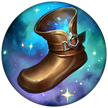







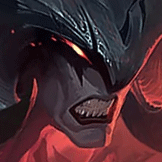
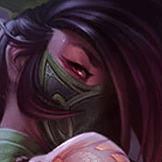
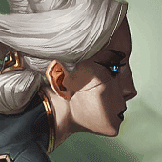
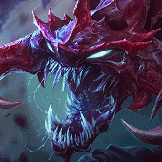
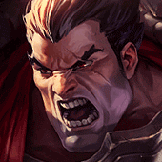
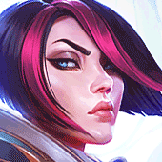
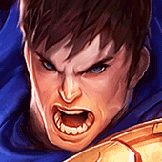
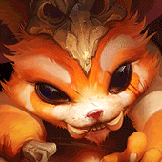

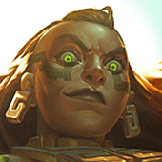
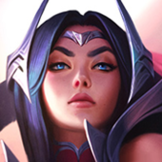
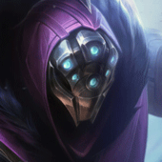
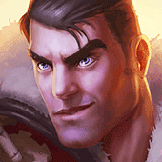
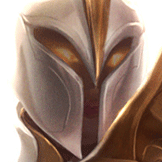
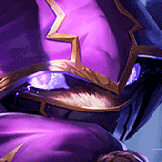
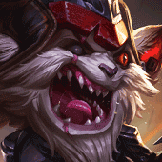
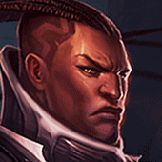
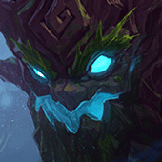
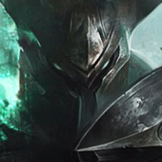
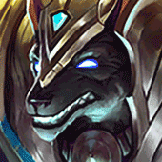

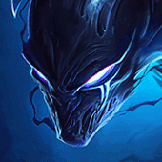
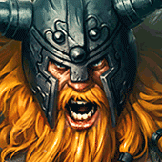
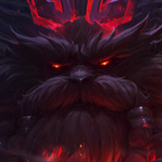
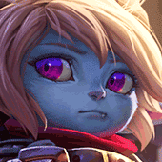
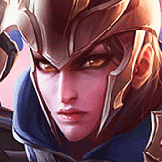
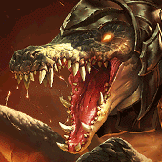
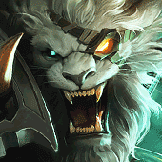
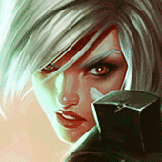

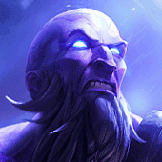
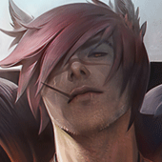
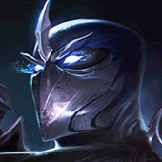
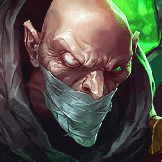
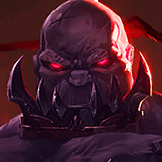


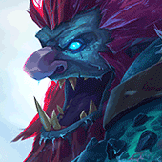
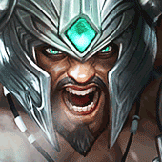
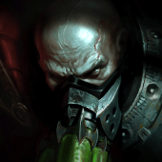
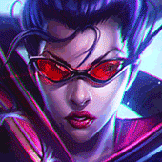
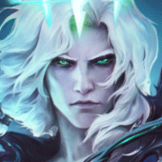
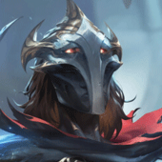
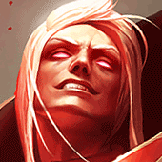
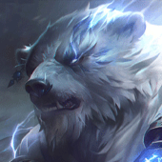
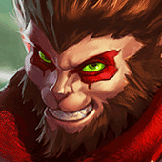
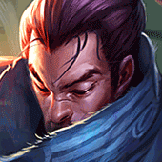
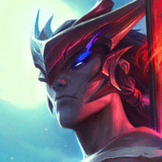
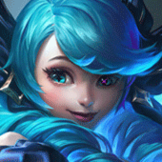
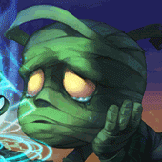
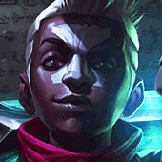
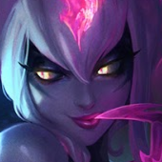
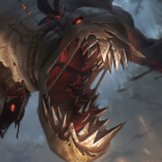

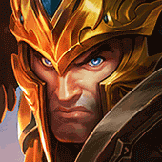
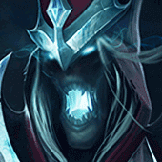
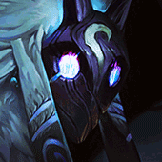
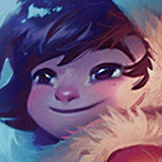
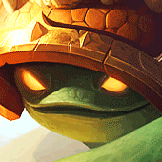
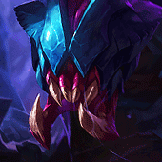
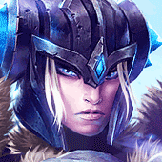
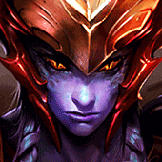
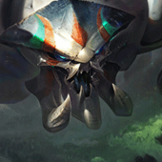
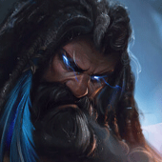

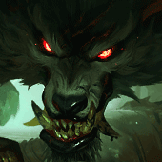
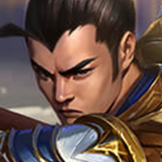
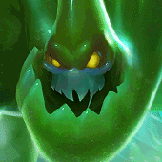









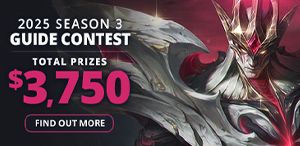

You must be logged in to comment. Please login or register.